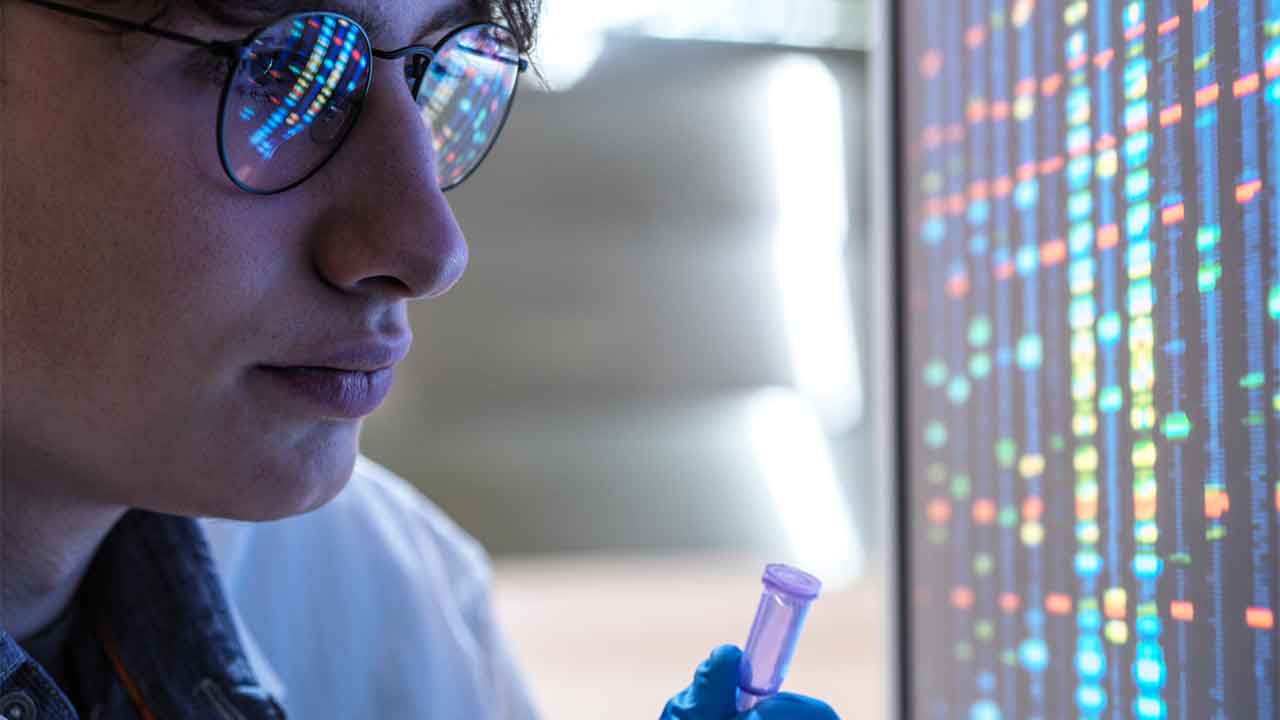“We really, really did it!”: Human genome finally completed

Scientists say they have finally mapped the entire human genome, 20 years after it was first celebrated around the world.
A team of international researchers have been able to fill in the gaps in the sequence that contains all of the genetic information humans need to function.
The scientists worked together as part of the Telomere to Telomere (T2T) consortium and presented a gap-free sequence of the roughly three billion bases (or “letters”) in DNA.
These letters, known as A, C, G and T, form pairs that are strung together to form genes and can include instructions for making proteins which are then used for everything from repairing tissue and helping our immune systems function to providing structure for our cells and allowing our bodies to move.
The new research comes after the first draft of the human genome was announced in 2000, which was incomplete because technology to sequence DNA wasn’t able to read certain parts of it.
These parts included really long, highly repetitive sequences of the letters which have been described as “junk DNA”.
As technology evolved and the genome continued to be updated, about eight percent of the DNA in the genome was still unknown - until now.
“Some of the genes that make us uniquely human were actually in this ‘dark matter of the genome’ and were totally missed,” Evan Eichler, a University of Washington researcher who was involved in the current research and the original Human Genome Project, told NZ Herald.
“It took 20-plus years, but we finally got it done.”
Many - including Eicher’s own students - thought the genome had been completed by now, making the latest achievement even more surprising.
“I was teaching them, and they said, ‘Wait a minute. Isn’t this like the sixth time you guys have declared victory?’ I said, ‘No, this time we really, really did it!’”
The research is so significant it even prompted Eichler to write his first ever tweet announcing it.
It only took a complete human genome for @EichlerEE actually make his first twitter post. I think this means we can expect more posts from him in the future as long as @aphillippy @sergeynurk @sergekoren @ArangRhie @MikkoRautiaine3 finish some more genomes! https://t.co/aDSwBt6gW1
— Mitchell R. Vollger (@mrvollger) March 31, 2022
Karen Miga, another of the authors of the six studies released on Thursday, said having a complete picture of the genome would further the understanding of our evolution and pave the way for medical discoveries in areas such as ageing, cancer, and neurodegenerative conditions.
“We’re just broadening our opportunities to understand human disease,” Miga said.
Before now, Miga said the gaps in the map of the genome were “large and persistent” and in “pretty important regions”.
The hugely collaborative work, including researchers from the University of California, the University of Washington, and the National Human Genome Research Institute, also corrects previous errors in the map.
“This is a major improvement, I would say, of the Human Genome Project,” said geneticist Ting Wang, who wasn’t involved in the studies.
It also turned out that these unknown stretches of DNA also contain some that play an important role in evolution and disease, and even some that are integral to making our brains larger than a chimp’s.
Reading genes requires scientists to cut strands of DNA into pieces, which sequencing machines then read letter by letter. With the strands being anywhere from hundreds to thousands of letters long, scientists are then tasked with reordering the pieces so they are correct - a tough task when there are lots of repeating letters.
With technology now allowing for the genome to be complete, future research will look to map even more genomes and collect genes from both parents.
Image: Getty Images
